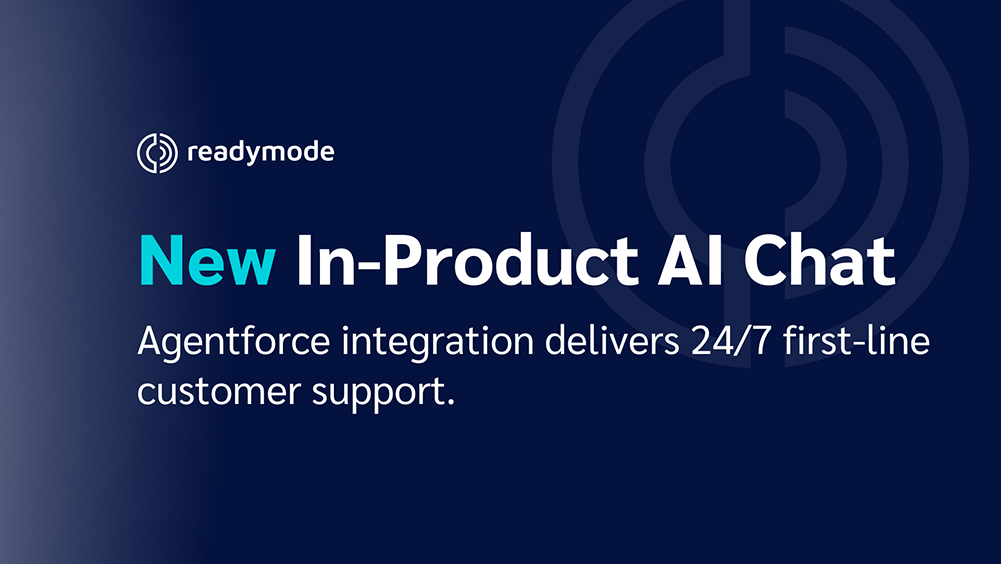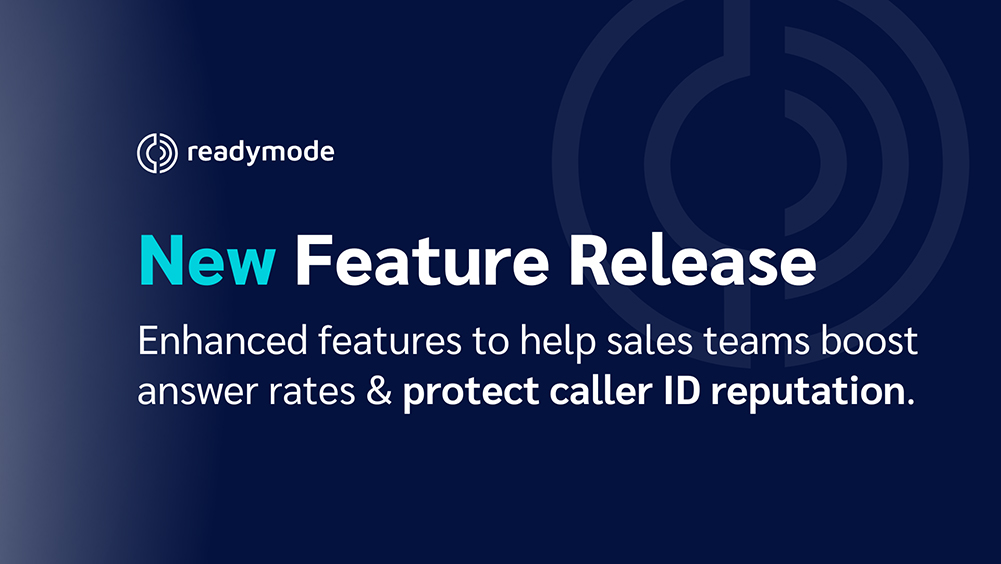Insurance agents often lose deals not because they lack leads but because the process breaks down: numbers get flagged, conversations slip through the cracks, or outreach slows to a crawl.
As a leading insurance dialer, we at Readymode see these struggles firsthand when health, life, and auto insurance teams come to us for a better way to manage outreach.
After making the switch, those same companies find their agents more persistent, organized, and compliant, while also driving more sales and closing deals faster.
So, what exactly is an insurance dialer, and how can it transform your business? More importantly, what should you look for when choosing one, and why is Readymode a leading option?
We’ll cover all of these points in detail in this article.
TL;DR: How to Choose the Best Insurance Dialer
An insurance dialer is software that automates outbound calling so agents spend less time manually dialing and more time speaking with live prospects.
For health, life, and auto insurance teams, this means faster follow-ups, higher connect rates, and fewer missed opportunities.
When choosing an insurance dialer, make sure it includes these must-have features:
- Multimode dialing options: Switch between predictive, progressive, power, and preview modes to match each campaign’s needs.
- Local presence dialing: Display local area codes to build trust and increase answer rates.
- Built-in CRM with dynamic scripts: Access policy details and personalized scripts on one screen for more relevant conversations.
- Caller ID reputation monitoring and remediation: Detect and fix flagged numbers to keep contact rates high.
- Built-in compliance tools: Automate DNC management, call attempt limits, and state restrictions.
Readymode brings all of these features together in one platform, helping insurance teams move faster, stay compliant, and personalize every call, making it the go-to platform for scaling outreach and closing more policies.
What Is an Insurance Dialer and How Does It Work?
An insurance dialer is an outbound calling system that automates the process of connecting agents with live prospects.
Instead of dialing numbers by hand, only to hit voicemails or busy tones, the system calls through your list automatically and connects reps only when a real person answers. For insurance teams, this shift is huge.
Agents selling high-demand insurance offers like life, health, and auto insurance spend less time punching numbers and more time talking to potential policyholders. That means more quotes delivered, more policies sold, and fewer leads lost along the way.
Imagine an agent manually dialing 100 numbers in a day. After filtering through wrong numbers, voicemails, and delays, they may only reach 10–15 live prospects.
With a top insurance dialer like Readymode, that same agent could connect with double or triple the live prospects in the same amount of time, without working longer hours. Multiply that across an entire team, and the impact on revenue is undeniable.
As a leading insurance dialer, Readymode offers four dialing modes: preview, power, progressive, and predictive.
This lets insurance teams choose the right pace for every campaign. Whether it’s high-volume outreach during open enrollment or more tailored conversations for renewals, Readymode allows teams to adapt and deliver more meaningful connections.
How an Insurance Dialer Works
Broadly speaking, here’s how an insurance dialer typically works.
- Step 1: Load leads into the dialer: The dialer system imports leads from your CRM or spreadsheets, organizing them into campaigns based on product (health, life, home, auto, Medicare) or region.
- Step 2: Automate dialing: The dialer places calls automatically, using the mode you choose (predictive, power, progressive, or preview). An advanced dialer like Readymode also detects busy tones, voicemails, and invalid numbers, skipping past them without agent involvement.
- Step 3: Connect live calls: Predictive insurance dialers instantly route calls to an available agent when a prospect answers. No dead air, no wasted time. In comparison, single dialers (such as a power dialer) automatically start dialing the next number if a prospect doesn’t answer or the call goes to voicemail.
- Step 4: Use integrated call tools: While talking, the agent sees the lead’s details on-screen, such as policy type, previous conversations, or campaign notes, through a built-in CRM. Dynamic scripts can even adapt automatically, so agents always know what to say.
- Step 5: Log outcomes and generate reports: Once the call ends, the system logs the outcome, schedules follow-ups if needed, and feeds data back into reports for managers to track performance in real time.
For agents, using an insurance dialer means they spend their time on meaningful conversations instead of fighting with spreadsheets, chasing callbacks, or worrying about compliance rules. For managers, it means clear visibility into campaigns and performance, so they can adjust pacing, coach reps, and improve results faster.
Why Should Insurance Agents Use a Dialer? The Key Benefits
In our work with insurance companies at Readymode, a common pattern emerges. Some teams specialize in lead generation, while others focus on serving existing policyholders. Regardless of their approach, agents consistently face the same barriers: limited time, fragmented processes, and a lack of scalable outreach tools.
That’s exactly the difference a dialer makes. It creates more opportunities for agents to connect and fewer chances for prospects to slip away.
As one insurance agent recently shared in a public five-star review, using Readymode meant “constantly getting in front of leads, increasing contacts, and closing more policies.”
Let’s quickly discuss some of the biggest benefits a dialer offers and the problems it solves for insurance businesses.
Problem #1: Leads Go Cold Before Agents Can Respond
By the time an insurance agent finishes manually dialing through yesterday’s list, many of those leads have already spoken to competitors. A dialer solves this by automatically calling new leads as soon as they’re added to the system, ensuring every inquiry is contacted quickly.
Problem #2: Agents Struggle to Keep Up With Follow-Ups
When agents track lead attempts manually in spreadsheets, sticky notes, or in separate CRMs, it’s easy to forget callbacks or lose track of who’s next. Missed follow-ups mean missed policies. A dialer prevents this by automatically logging every call attempt and scheduling follow-ups without extra effort from the agent. The system keeps each lead moving through the pipeline.
Problem #3: Customer Data Is Scattered Across Too Many Tools
In many insurance teams, agents juggle multiple systems (CRMs, spreadsheets, dial pads, and email) just to get through a call. Dialers integrate with CRMs to bring everything together on one screen. Agents can see policy history, notes, and tailored scripts while they’re on the call, making every conversation more efficient and more personal.
When a Dialer May Not Be the Right Fit
- Small lead lists: If you’re only calling 10–20 prospects per day, manual dialing may be enough.
- Unstable internet connections: Dialers run on VoIP, so poor connectivity can cause dropped calls or bad audio quality.
- High-prep calls: If every call requires detailed research before dialing, slower options like preview or manual dialing may work better.
For most insurance teams, though, a dialer removes wasted effort, helps enforce compliance, and gives agents more time for selling.
Pros & Cons of Insurance Dialers
| Pros | Cons |
| Faster response to new leads; inquiries are contacted within minutes instead of hours | Not effective for very small lists; automation adds little value |
| Multiple call attempts handled automatically; system retries leads at optimal times | Requires reliable internet; poor connectivity can cause dropped calls |
| Compliance managed in the background; DNC, state rules, and limits enforced automatically | Learning curve for new agents; teams need training to maximize results |
| All lead data, notes, and scripts available on one screen | Initial setup requires time to configure lists, rules, and campaigns |
| Real-time dashboards for monitoring and coaching during live campaigns |
Top Features to Look for in Insurance Dialers
Not every dialer is built with insurance sales in mind. To get real value, you need a dialer that helps you respond faster, stay compliant, manage data seamlessly, and support agents through every stage of the insurance sales cycle.
So, when searching for an insurance dialer, look specifically for the following features:
Feature #1: Multimode Dialing Options
Insurance agents require different dialing modes depending on the type of outreach. For high-volume campaigns like lead generation, predictive or progressive dialing works best. For tailored outreach such as renewals or closing high-value policies, preview or power dialing is more effective.
That’s why it’s important to choose a dialer with multiple modes. Readymode offers predictive, progressive, power, and preview dialing, giving insurance teams the flexibility to match their dialing strategy to each campaign.
Feature #2: Local Presence Dialing
When calling prospects across multiple regions, unfamiliar area codes can reduce answer rates. Local presence dialing solves this by displaying a local number that matches the lead’s area code, building trust and increasing the chance of a pickup.
This is especially useful for insurance teams with remote agents supporting local offices. With Readymode, agents can use local presence to connect with more prospects and improve contact rates across every campaign.
Feature #3: Built-in CRM with Dynamic Scripts
According to McKinsey, 61% of consumers expect companies to personalize their outreach and get frustrated when it isn’t. For insurance sales, tailoring conversations to each prospect’s needs is even more critical.
That’s why your dialer should include a built-in CRM. With Readymode, agents see policy history, past interactions, and lead details on one screen. Dynamic scripts then embed this data directly into the conversation, allowing agents to personalize outreach at scale and build trust with every call.
Feature #4: Caller ID Reputation Monitoring & Remediation
When phone numbers are flagged as “Spam” or “Scam Likely,” prospects are far less likely to answer. For insurance agents who rely on high contact rates, this can stall entire campaigns.
That’s why it’s important to use a dialer with caller ID reputation tools. With Readymode iQ, you can see exactly how your numbers appear to prospects, identify which are flagged, and remediate them to restore trust and keep calls flowing.
This helps agents maintain healthy connection rates across every campaign.
Feature #5: Built-In Compliance Tools
Insurance agents must follow strict rules when making outbound calls, from the National DNC Registry to TCPA and state-specific restrictions. Managing these manually is overwhelming and risky. That’s why your dialer should have compliance tools built in.
Readymode supports compliance by helping you automate the implementation of DNC rules, state calling restrictions, and call attempt limits as part of your workflow. This allows agents to stay productive while ensuring every campaign operates within the law, protecting both the business and the agent.
What to Avoid in Insurance Dialers
Features are one thing, but the overall experience of working with a dialer provider is just as critical. Insurance teams rely on their dialer every day, and if the platform isn’t aligned with your business, you’ll struggle to scale.
Here are three specific red flags to watch out for when evaluating insurance dialers:
Red Flag #1: Limited Customer Support
Insurance agents can’t afford downtime when their dialer fails or needs adjustment. Limited or delayed support means lost calls and lost revenue. Look for a provider that offers responsive, always-available help. Readymode includes unlimited free support through email and 24/7 AI chat, keeping agents connected.
Red Flag #2: Poor Call Quality and Connection Rates
Even the best dialer features don’t matter if prospects can’t hear you. Dropped calls and bad audio frustrate both agents and clients, lowering trust and conversions. Choose a provider that guarantees clear, reliable connections. Readymode partners with top-tier carriers to ensure consistent call quality.
Red Flag #3: Hidden Fees
Some dialers advertise low upfront costs but add fees for setup, outbound minutes, or basic features. These hidden charges make it harder to budget and scale. Look for transparent, all-inclusive pricing. Readymode includes unlimited outbound minutes and free setup, so costs stay predictable.
Why Readymode Is the Right Insurance Dialer for Your Business
Readymode is an advanced insurance dialer that brings together all the qualities we’ve discussed in this article. It improves agent productivity and automates time-consuming processes, including compliance, so performance stays consistent.
Here’s a quick recap of the problems Readymode solves, making it a powerful choice for insurance teams:
- Eliminates delays by connecting agents to new leads faster
- Prevents missed opportunities with automated follow-ups and retries
- Keeps campaigns compliant with built-in DNC and state rule management
- Protects connection rates with caller ID reputation monitoring and remediation
- Simplifies workflows by combining CRM, scripts, and reporting in one platform
Book a free demo with Readymode to see how it can transform your insurance sales process.
Jawad Khan
Jawad is a seasoned content marketer and freelance technology writer featured in some of the world's leading digital marketing, e-commerce, and software related publications. As an expert contributor, Jawad has written for startups and enterprises, including Fortune 500 companies, across various tech verticals.








